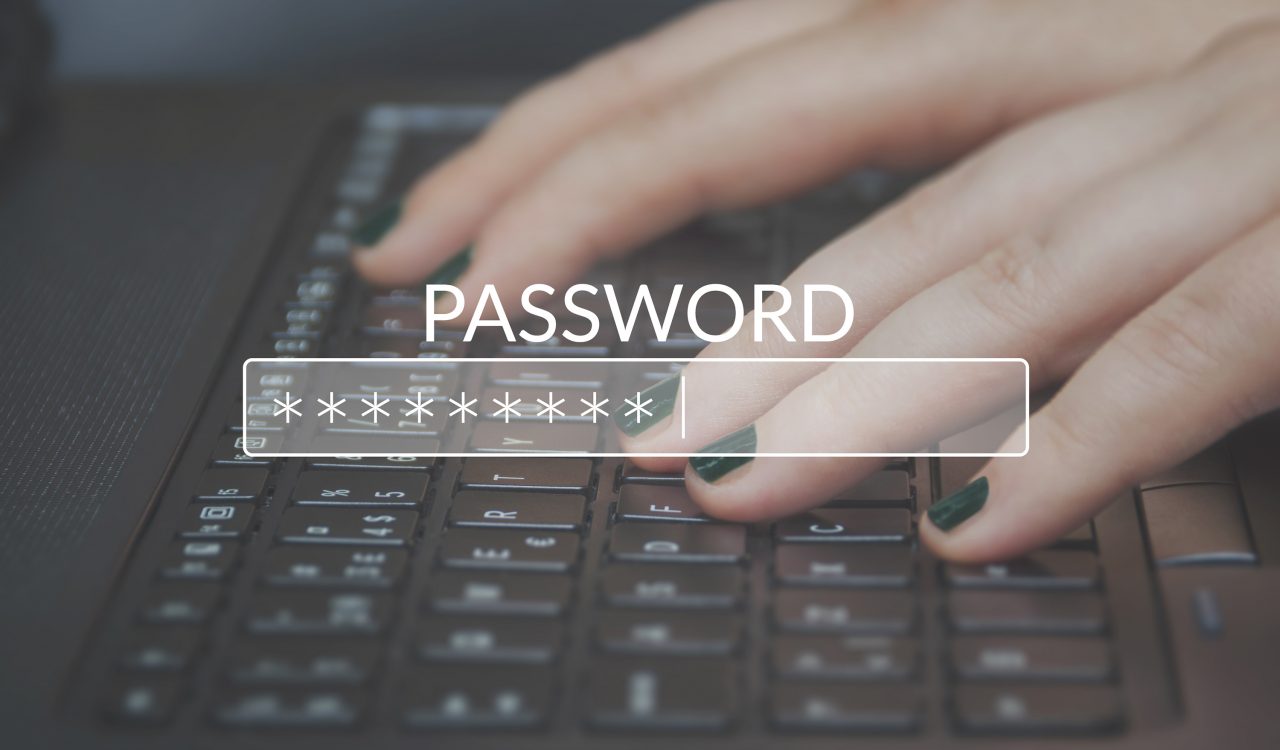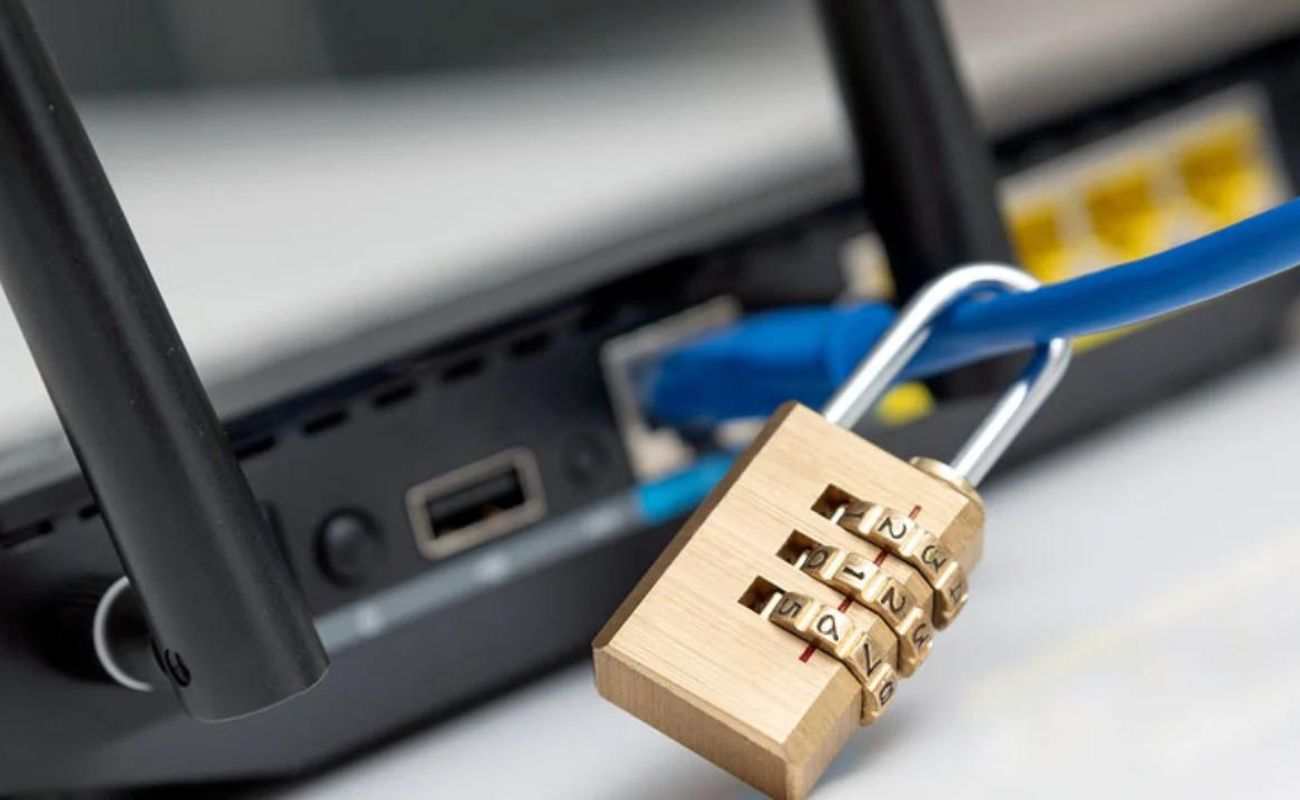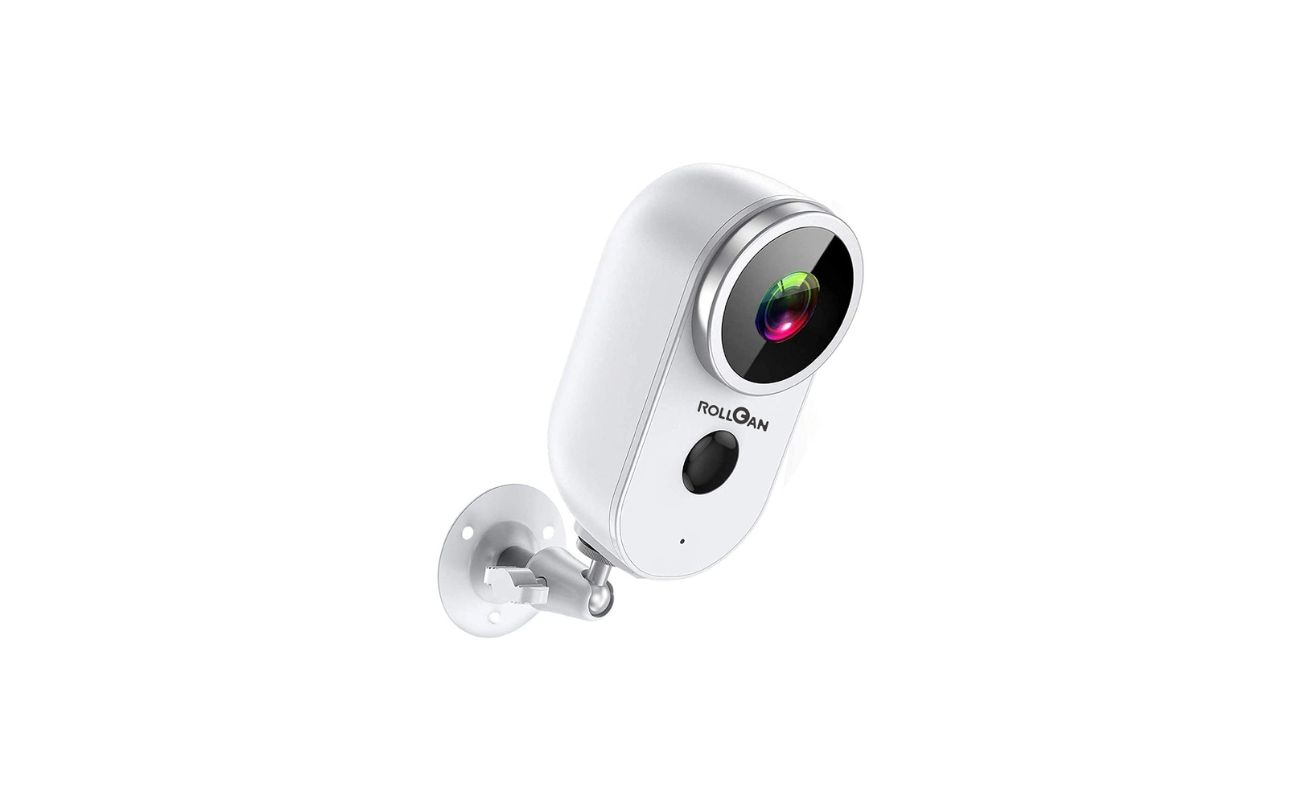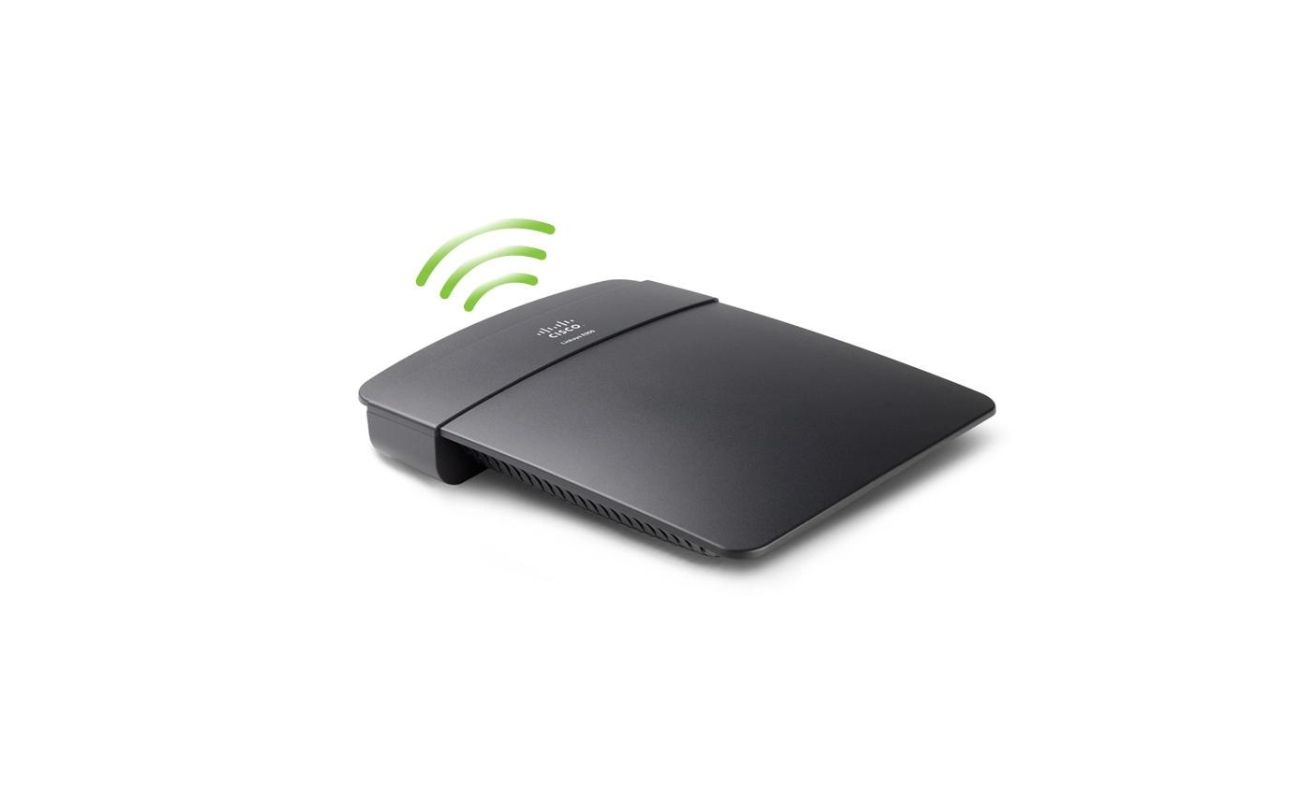Home>Home Security and Surveillance>What Are Wireless Security Pre-shared Keys


Home Security and Surveillance
What Are Wireless Security Pre-shared Keys
Modified: March 6, 2024
Looking to enhance your home security and surveillance? Learn about wireless security pre-shared keys and how they can protect your network.
(Many of the links in this article redirect to a specific reviewed product. Your purchase of these products through affiliate links helps to generate commission for Storables.com, at no extra cost. Learn more)
Introduction
Welcome to the world of wireless home security and surveillance! In an era where our homes are filled with smart devices and interconnected systems, ensuring the safety and privacy of our living spaces has become a top priority. One of the key components of a robust home security system is a wireless pre-shared key (PSK).
A pre-shared key, also known as a network password or passphrase, is essentially a security code that is required to access a wireless network. It serves as a barrier between authorized users and potential intruders, safeguarding your personal information and preventing unauthorized individuals from connecting to your network.
In this article, we will delve into the world of wireless security pre-shared keys and explore their importance in protecting your home network. We will discuss the various types of pre-shared keys, best practices for creating strong passwords, steps to secure your wireless network, and the limitations and vulnerabilities of pre-shared keys. By the end, you will have a comprehensive understanding of how to enhance the security of your home network through the use of pre-shared keys.
Key Takeaways:
- Protect your home network with a wireless pre-shared key to keep out unauthorized users and secure your personal information. Use strong, complex keys and follow best practices for maximum security.
- Be aware of the limitations and vulnerabilities of pre-shared keys, such as brute-force attacks and insider threats. Regularly update keys and practice good network hygiene to mitigate risks and maintain security.
What is a Pre-shared Key (PSK)?
A pre-shared key (PSK) is essentially a password or passphrase that is used to authenticate and secure a wireless network. It is a form of symmetric encryption, meaning that the same key is used for both encrypting and decrypting data. When a device attempts to connect to a wireless network, it must provide the correct pre-shared key in order to gain access.
The pre-shared key acts as a shared secret between the wireless router or access point and the devices that want to connect to the network. It ensures that only authorized individuals with knowledge of the key can join the network while keeping unauthorized users at bay.
PSKs are widely used in home networks and small businesses due to their simplicity and efficiency. Unlike more complex authentication methods, such as digital certificates or RADIUS servers, pre-shared keys do not require additional infrastructure or third-party involvement. This makes them a convenient and cost-effective option for securing wireless networks.
It is important to note that the security of a wireless network lies heavily on the strength and complexity of the pre-shared key. A weak or easily guessable key can render the entire network vulnerable to unauthorized access and potential security breaches.
Now that we have a basic understanding of what a pre-shared key is, let’s explore why it is so crucial for maintaining the security of your wireless network.
Importance of Wireless Security Pre-shared Keys
Wireless security pre-shared keys play a vital role in protecting your home network from unauthorized access and safeguarding your personal information. Here are some key reasons why they are important:
1. Prevent Unauthorized Access
By requiring a pre-shared key to connect to your wireless network, you can ensure that only authorized users can gain access. This prevents neighbors, passersby, or potential hackers from connecting to your network and potentially compromising your privacy and security.
2. Secure Data Transmission
A strong pre-shared key ensures that all data transmitted over your wireless network is encrypted and secure. This means that even if someone manages to intercept the data, they won’t be able to decipher it without the correct key. It adds an extra layer of protection to sensitive information, such as banking details, passwords, or personal communications.
Read more: How To Change Wireless Security Key
3. Protect Personal Information
Your home network likely contains a plethora of personal information, including financial records, work documents, and personal photographs. A pre-shared key helps safeguard this information by preventing unauthorized users from gaining access to your network and potentially stealing or tampering with your data.
4. Avoid Network Congestion
Having a secure pre-shared key ensures that only authorized devices are connected to your network, eliminating the possibility of unauthorized devices causing network congestion. This helps maintain a stable and fast connection for your devices, enhancing the overall performance and user experience.
5. Deter Cyber Attacks
Pre-shared keys act as a deterrent for potential cyber attacks. Hackers and malicious individuals are more likely to target networks that are left unprotected or have weak security measures in place. By implementing a robust pre-shared key, you make your network less attractive to these attackers and lessen the chances of becoming a victim of a cyber attack.
Overall, wireless security pre-shared keys are a critical component of a comprehensive home security system. They not only protect your personal information and ensure the privacy of your network but also help maintain a stable and secure connection for all your devices.
Common Types of Pre-shared Keys
When it comes to wireless security pre-shared keys, there are several different types and formats that are commonly used. Let’s explore some of the most popular ones:
Read more: How To Find Your Wireless Security Key
1. Alphanumeric Passwords
Alphanumeric passwords are a combination of letters, numbers, and special characters. They provide a higher level of security compared to simple dictionary words or phrases. It is recommended to use a mix of uppercase and lowercase letters, numbers, and special characters to create a strong and complex pre-shared key.
2. Passphrases
A passphrase is a longer sequence of words or a sentence that is used as a pre-shared key. Passphrases are often easier to remember and more user-friendly compared to random strings of characters. However, it is important to use a combination of words that are unrelated and not easily guessable. Adding numbers or special characters to the passphrase can further enhance its security.
3. WEP Keys
Wired Equivalent Privacy (WEP) keys are a type of pre-shared key used in older wireless security protocols. While WEP keys are still supported by some devices, they are considered less secure than more modern encryption methods. It is recommended to avoid using WEP keys unless absolutely necessary and instead opt for more secure alternatives.
4. WPA/WPA2-PSK
Wi-Fi Protected Access (WPA) and WPA2 with Pre-shared Key (WPA2-PSK) are widely used wireless security protocols. With WPA/WPA2-PSK, a strong pre-shared key is used to encrypt and secure the wireless communication. These protocols offer enhanced security compared to WEP and are highly recommended for protecting your wireless network.
5. QR Code Authentication
In some cases, pre-shared keys can be generated as a QR code, which can be scanned by authorized devices to automatically configure the network settings. This method simplifies the process of connecting to a wireless network and eliminates the need to manually enter a pre-shared key. However, it is important to securely share the QR code to prevent unauthorized individuals from gaining access to the network.
These are just a few examples of the common types of pre-shared keys used in wireless security. It’s important to choose a type that suits your needs and provides a strong level of security for your home network.
Best Practices for Creating Strong Pre-shared Keys
Creating a strong pre-shared key is crucial for enhancing the security of your wireless network. Here are some best practices to follow when creating your pre-shared key:
1. Use a Combination of Characters
Include a mix of uppercase and lowercase letters, numbers, and special characters in your pre-shared key. This adds complexity and makes it harder for unauthorized individuals to guess or crack the key.
2. Make it Long
The longer the pre-shared key, the stronger the security. Aim for a minimum of 12 characters, but consider using even longer keys if possible. Longer keys are more resistant to brute-force attacks and provide an extra layer of protection.
Read more: What Is Wireless Security?
3. Avoid Common Words or Phrases
Avoid using common dictionary words or phrases as your pre-shared key. Hackers often use dictionary-based attacks that try common words and phrases in an attempt to guess the key. Instead, opt for random characters or combine unrelated words to create a unique key.
4. Don’t Use Personal Information
Avoid using any personal information, such as your name, birthdate, or address, as part of your pre-shared key. Hackers can easily gather this information and use it to guess your key.
5. Regularly Update Your Pre-shared Key
It’s important to change your pre-shared key periodically to maintain security. Consider updating the key every few months or whenever there is a significant change in your network. This helps prevent unauthorized access and ensures that the key remains secure.
6. Don’t Share Your Pre-shared Key Publicly
Avoid sharing your pre-shared key publicly or with individuals you don’t trust. Only provide the key to authorized users who need access to your network. Sharing the key with others increases the risk of unauthorized access and compromises the security of your network.
Read more: What Is A Network Security Key For A Printer
7. Store Your Pre-shared Key Securely
Keep your pre-shared key in a safe and secure location. Avoid writing it down on easily accessible devices or sharing it in unencrypted files. Consider using a password manager to securely store and manage your pre-shared keys.
By following these best practices, you can create a strong and secure pre-shared key that helps protect your wireless network from unauthorized access and potential security breaches.
Steps to Secure Wireless Networks with Pre-shared Keys
Securing your wireless network with a pre-shared key is essential to protect your personal information and maintain the privacy of your network. Here are the steps you can follow to secure your wireless network:
1. Log in to Your Router’s Configuration Page
Open a web browser and enter your router’s IP address to access the configuration page. The IP address is typically found on the bottom of the router or in the user manual.
2. Change the Default Login Credentials
One of the first steps in securing your wireless network is to change the default login credentials for your router. This includes changing the username and password to a strong combination that only you know.
3. Enable WPA2-PSK Encryption
Go to the wireless security settings on your router’s configuration page and select WPA2-PSK as the encryption method. This is the most secure option currently available for wireless networks.
4. Create a Strong Pre-shared Key
Follow the best practices mentioned earlier to create a strong pre-shared key. Use a combination of characters, make it long, avoid common words, and regularly update the key to enhance security.
5. Disable WPS (Wi-Fi Protected Setup)
Disable the WPS feature on your router if it is enabled. While it may offer convenience, it can also be a potential security vulnerability, as it can be exploited by attackers to gain access to your network.
6. Enable Firewall Settings
Enable the built-in firewall settings on your router to add an extra layer of protection. This helps filter out unauthorized incoming traffic and potential threats.
Read more: What Is The Wireless Security Passphrase
7. Disable Remote Management
Disable remote management on your router to prevent unauthorized access. This feature allows you to manage your router’s settings from a remote location but can also be exploited by attackers if left enabled.
8. Position Your Router Securely
Place your router in a central location in your home and away from windows or doors. This helps minimize signal leakage and ensure that your network is only accessible within your desired range.
9. Regularly Update Firmware
Check for firmware updates for your router and install them regularly. These updates often include security patches and bug fixes that help safeguard your network.
10. Connect Devices with the Pre-shared Key
Once you have secured your wireless network, connect your devices using the pre-shared key. Enter the key when prompted by the device’s Wi-Fi settings and ensure that the connection is successful.
By following these steps, you can significantly enhance the security of your wireless network and protect your personal information from unauthorized access.
Limitations and Vulnerabilities of Pre-shared Keys
While pre-shared keys play a crucial role in securing wireless networks, it is important to be aware of their limitations and vulnerabilities. Here are some of the key considerations:
1. Brute-Force Attacks
Pre-shared keys are susceptible to brute-force attacks, where an attacker systematically tries different combinations until the correct key is discovered. Weak or easily guessable keys can be cracked more quickly, making it essential to create a strong and complex pre-shared key.
2. Insider Threats
Pre-shared keys can be vulnerable to insider threats, where someone with authorized access to the network intentionally or unintentionally shares the key with unauthorized individuals. It is crucial to only provide the key to trusted individuals and regularly monitor the network for any suspicious activity.
3. Key Sharing Risks
Sharing the pre-shared key with others can increase the risk of unauthorized access. If the key is shared insecurely or falls into the wrong hands, individuals with malicious intent may gain access to your network and compromise its security.
Read more: What Are Wireless Security Protocols
4. Limited Scalability
In larger networks or organizations, managing pre-shared keys for numerous devices can become challenging. As the number of devices increases, the task of securely distributing and updating the keys across all devices can become more complex.
5. Key Management and Rotation
Regularly updating and rotating pre-shared keys can be a time-consuming process, especially in larger networks. It requires coordination and communication to ensure all devices are updated with the new keys, and any interruption in the process can result in network downtime or decreased security.
6. Vulnerabilities in Encryption Protocols
Although pre-shared keys are used in conjunction with encryption protocols like WPA2-PSK, vulnerabilities have been discovered in some protocols over time. It is crucial to stay updated on the latest security advisories and promptly apply patches or updates provided by the manufacturer.
7. Physical Security Risks
In some cases, physical access to the wireless router can pose a risk to the pre-shared key’s security. If an attacker gains physical access to the router, they may be able to retrieve the key or reset the router’s settings, bypassing the security measures in place.
Despite these limitations and vulnerabilities, pre-shared keys remain an effective and widely used method of securing wireless networks. By implementing strong pre-shared keys, practicing good network hygiene, and staying vigilant for any potential threats, you can significantly mitigate these risks and maintain the security of your wireless network.
Conclusion
Securing your home network with a wireless pre-shared key is essential to protect your personal information, ensure privacy, and prevent unauthorized access. By following best practices for creating strong pre-shared keys and implementing proper security measures, you can significantly enhance the security of your wireless network.
In this article, we explored the importance of pre-shared keys in home security and surveillance. We discussed the various types of pre-shared keys, including alphanumeric passwords, passphrases, and WPA/WPA2-PSK encryption. We also outlined the steps to secure your wireless network, such as changing default login credentials, enabling encryption, and disabling vulnerable features.
While pre-shared keys offer robust security, it’s vital to be aware of their limitations and vulnerabilities. Brute-force attacks, insider threats, and sharing risks can compromise the security of pre-shared keys. Ongoing key management, regularly updating firmware, and implementing physical security measures are essential to maintain a secure network.
Remember to regularly update your pre-shared keys, use a combination of characters, and avoid common words or personal information. Strengthening your network’s security ensures the protection of your personal information and provides peace of mind.
In conclusion, securing your wireless network with pre-shared keys should be a priority for all homeowners. By following the best practices outlined in this article and being aware of the potential vulnerabilities, you can help protect your home network from unauthorized access, secure your personal data, and ensure a safe and private online experience for you and your family.
Frequently Asked Questions about What Are Wireless Security Pre-shared Keys
Was this page helpful?
At Storables.com, we guarantee accurate and reliable information. Our content, validated by Expert Board Contributors, is crafted following stringent Editorial Policies. We're committed to providing you with well-researched, expert-backed insights for all your informational needs.





